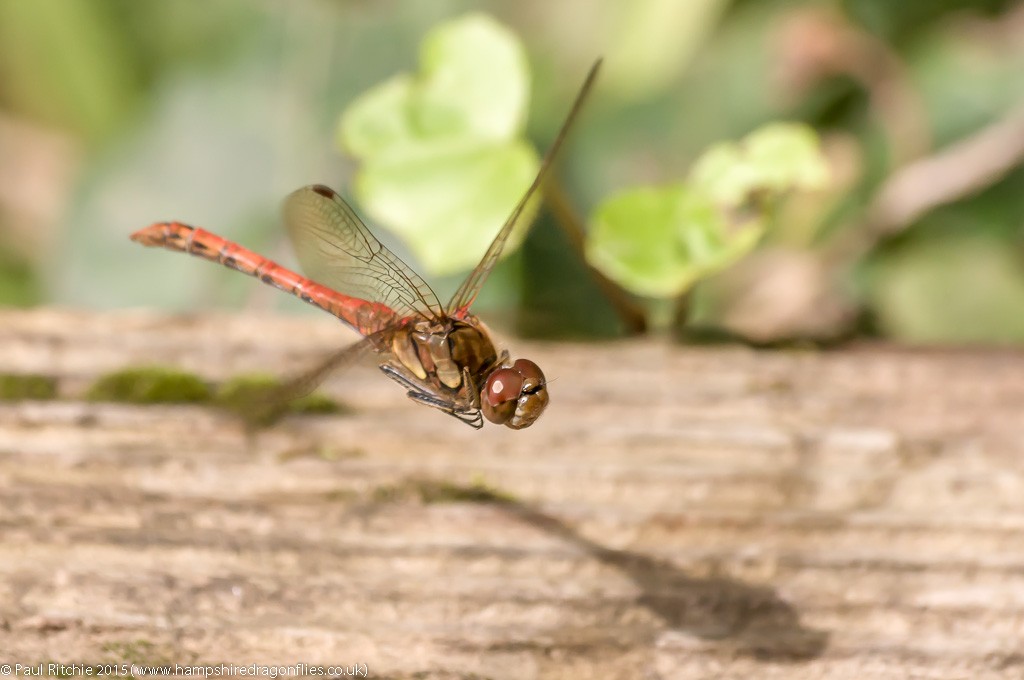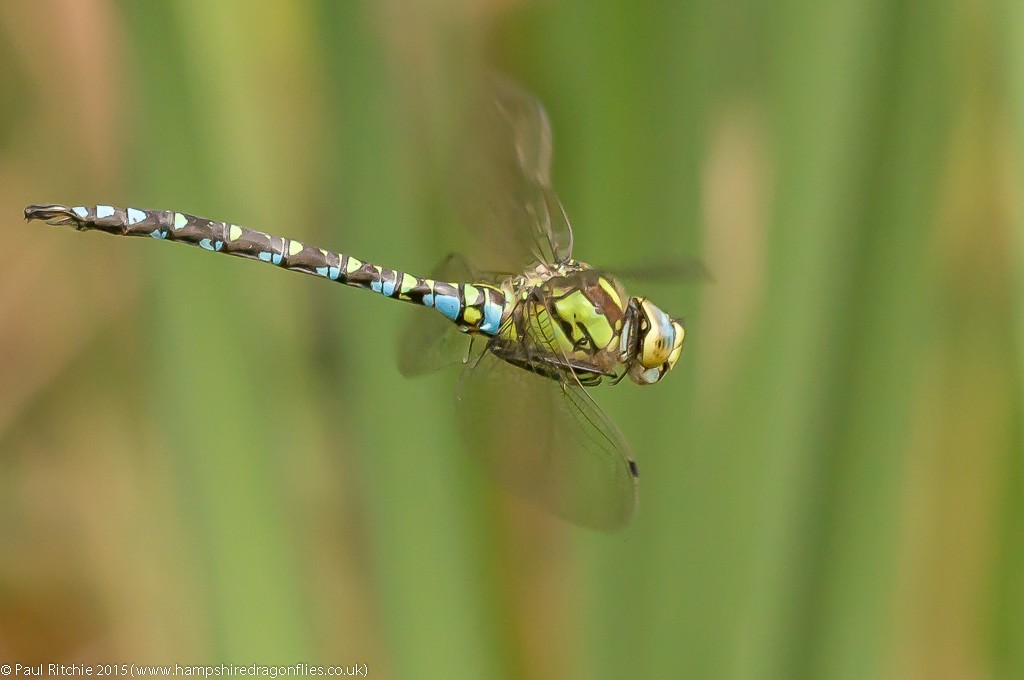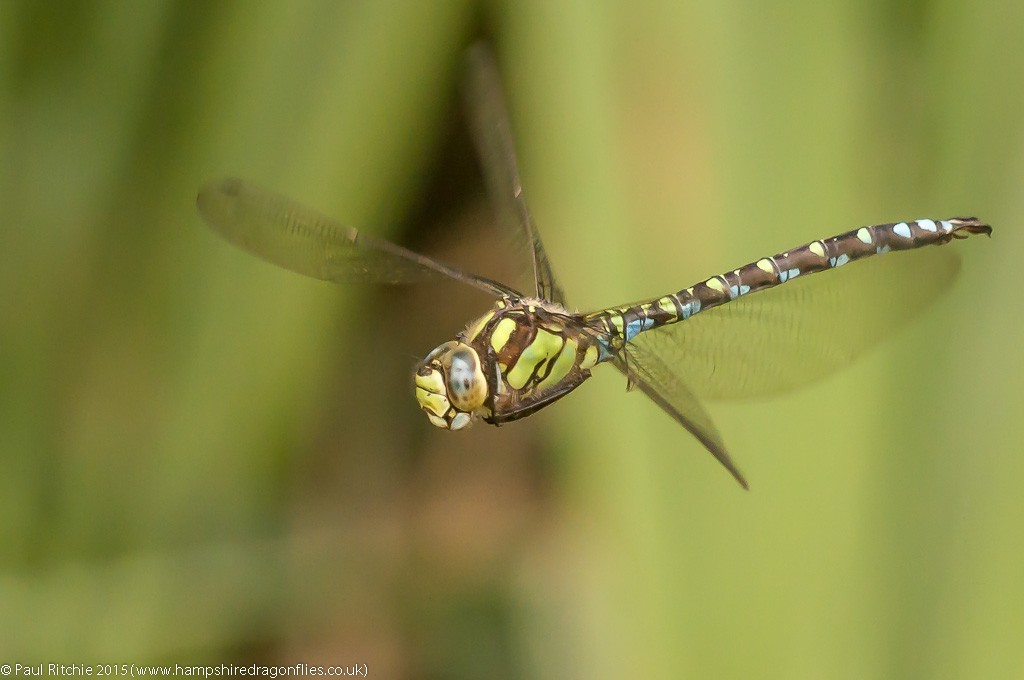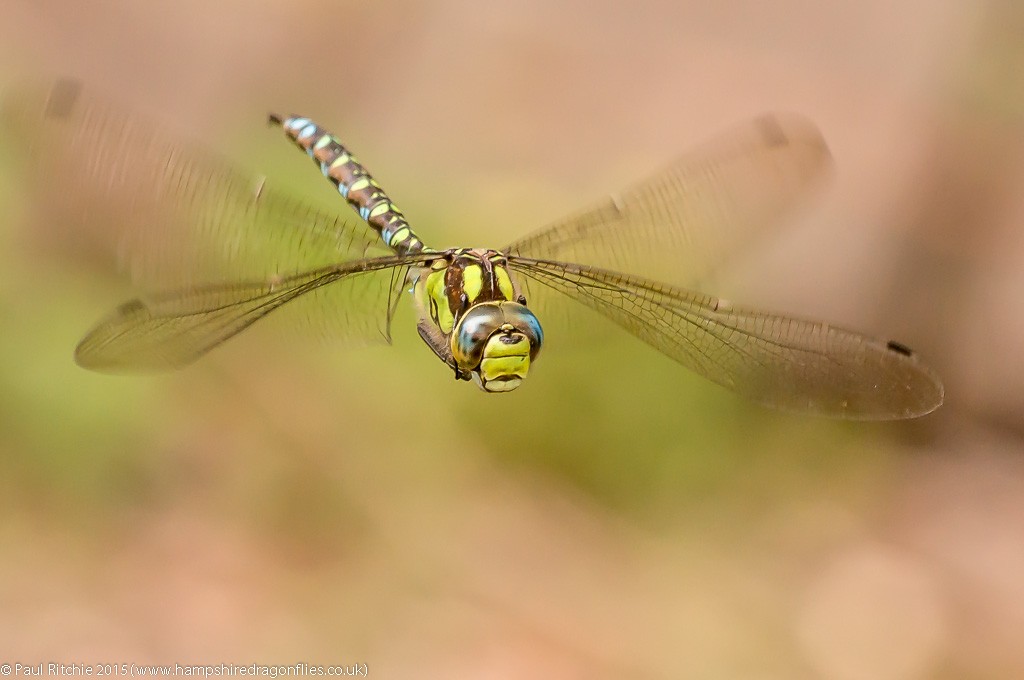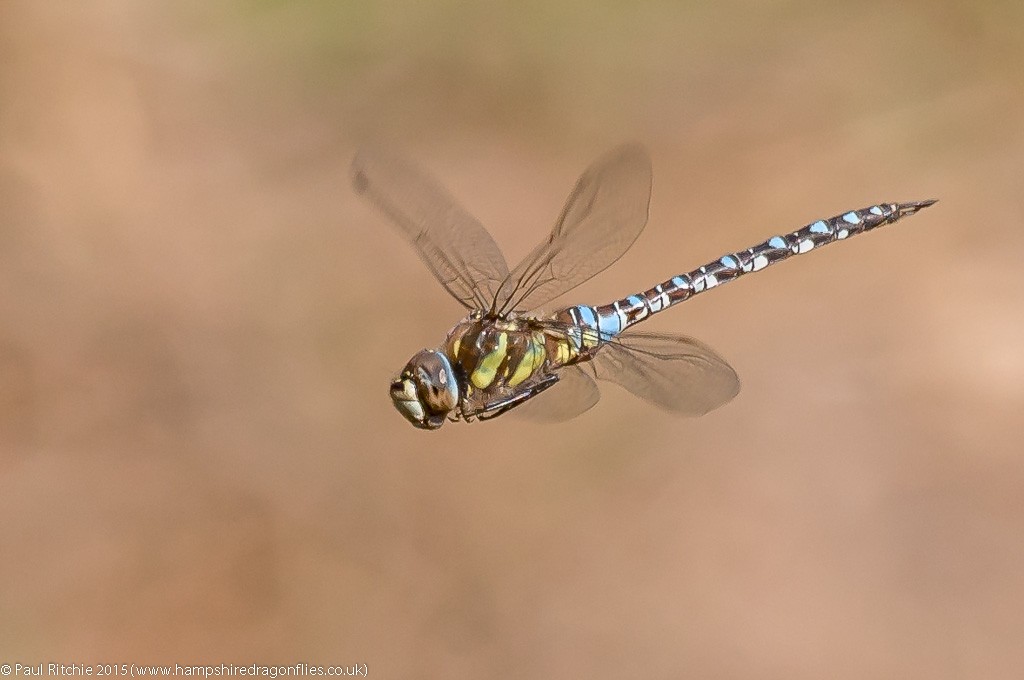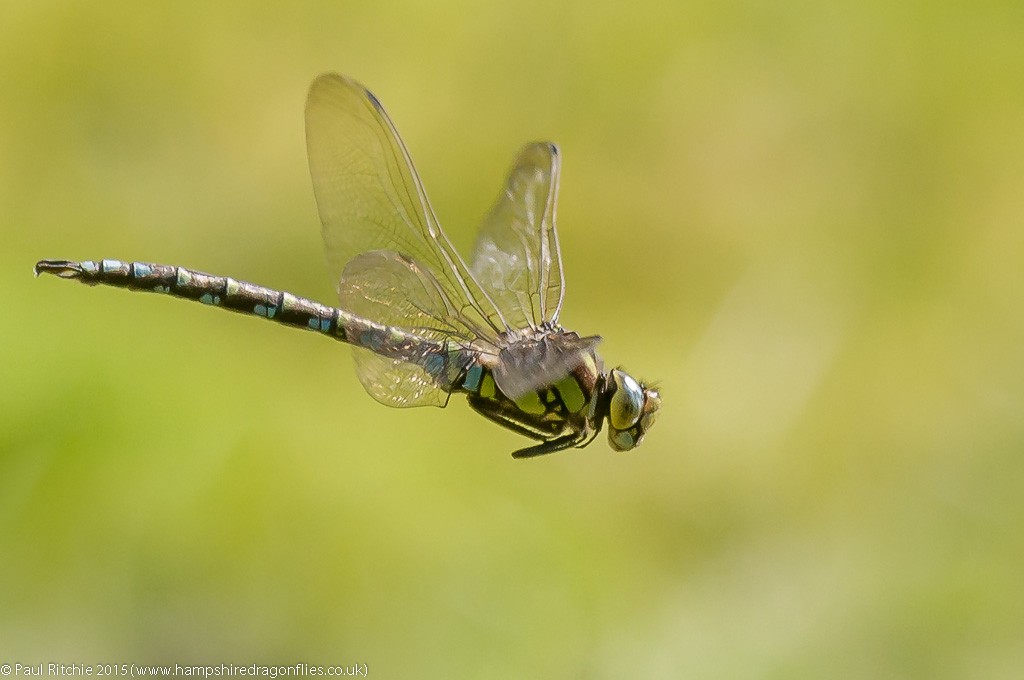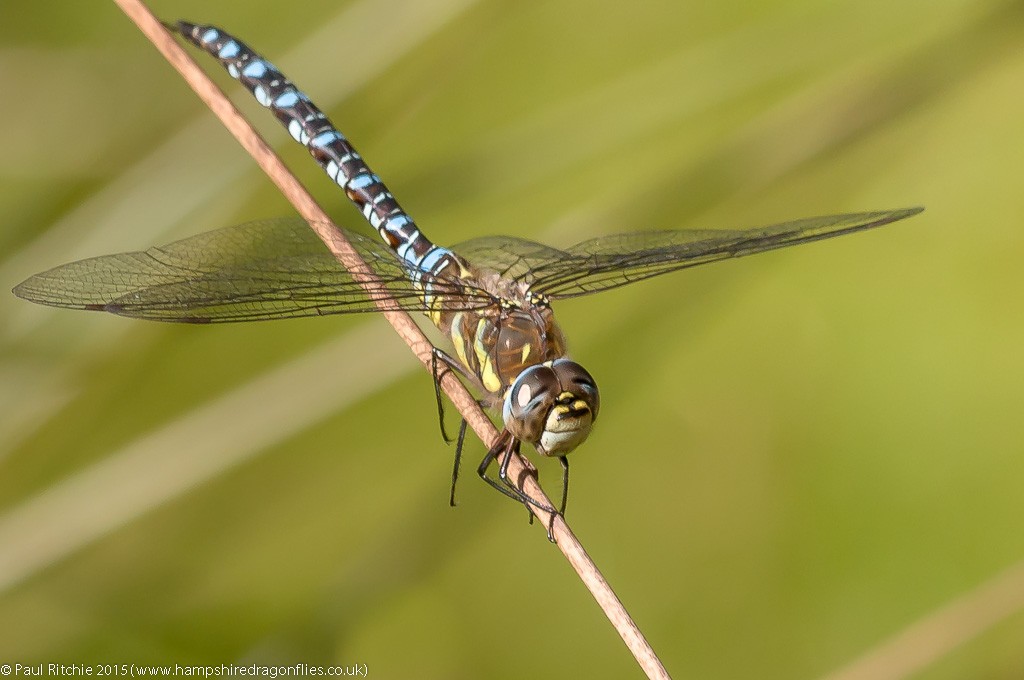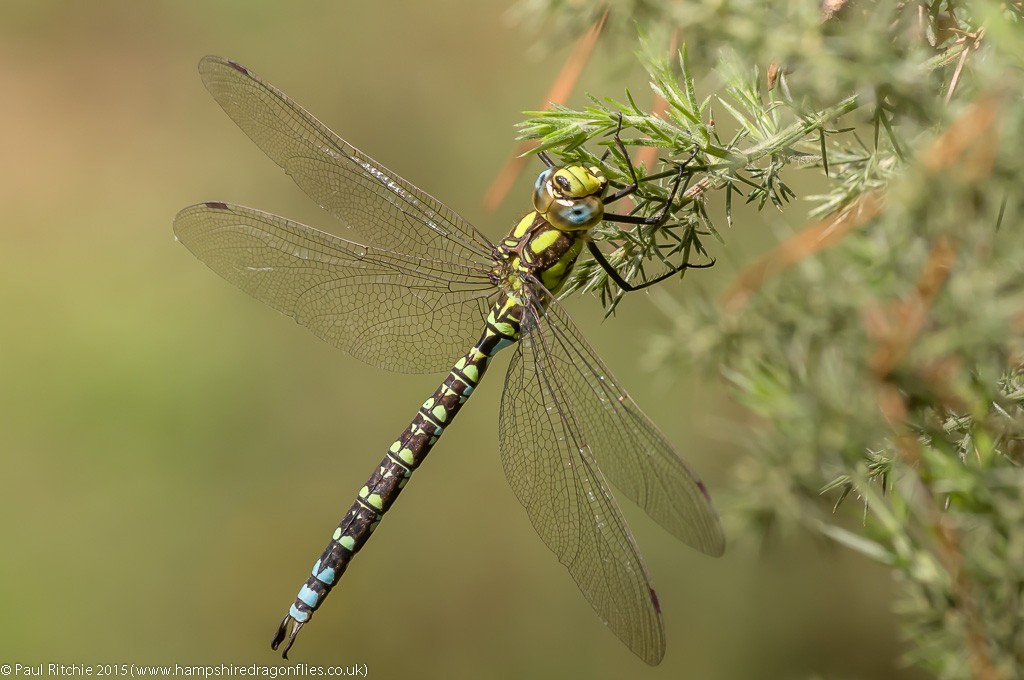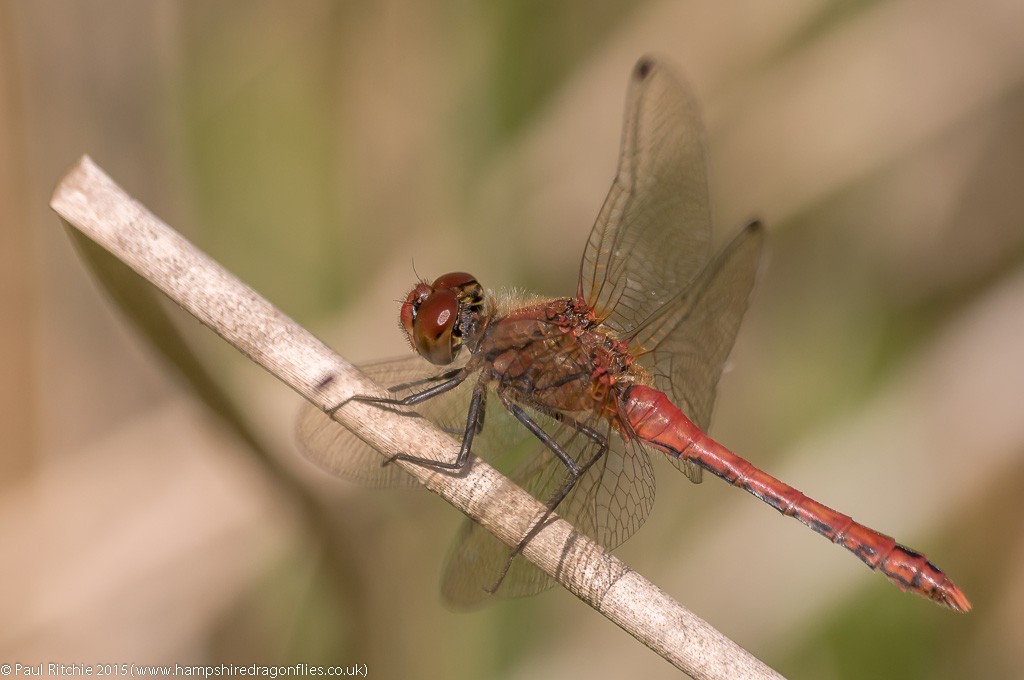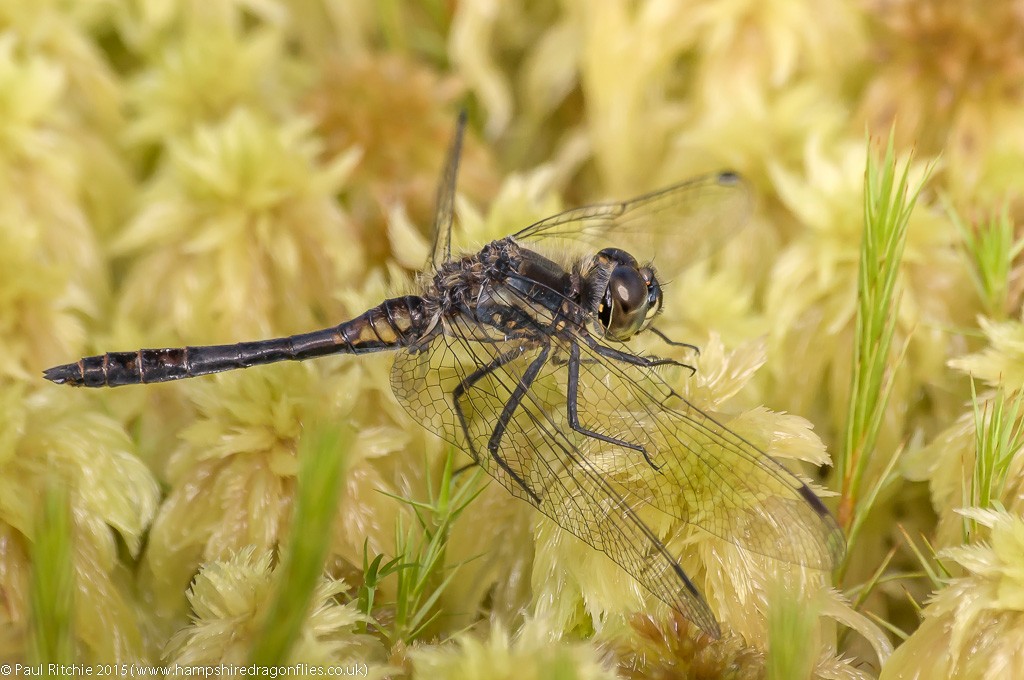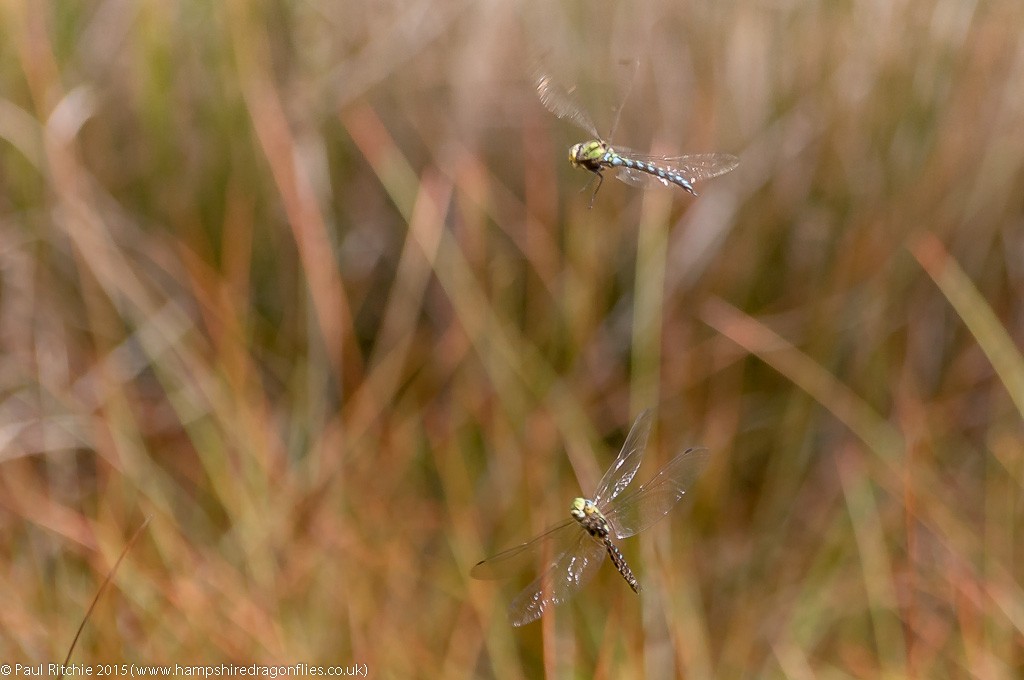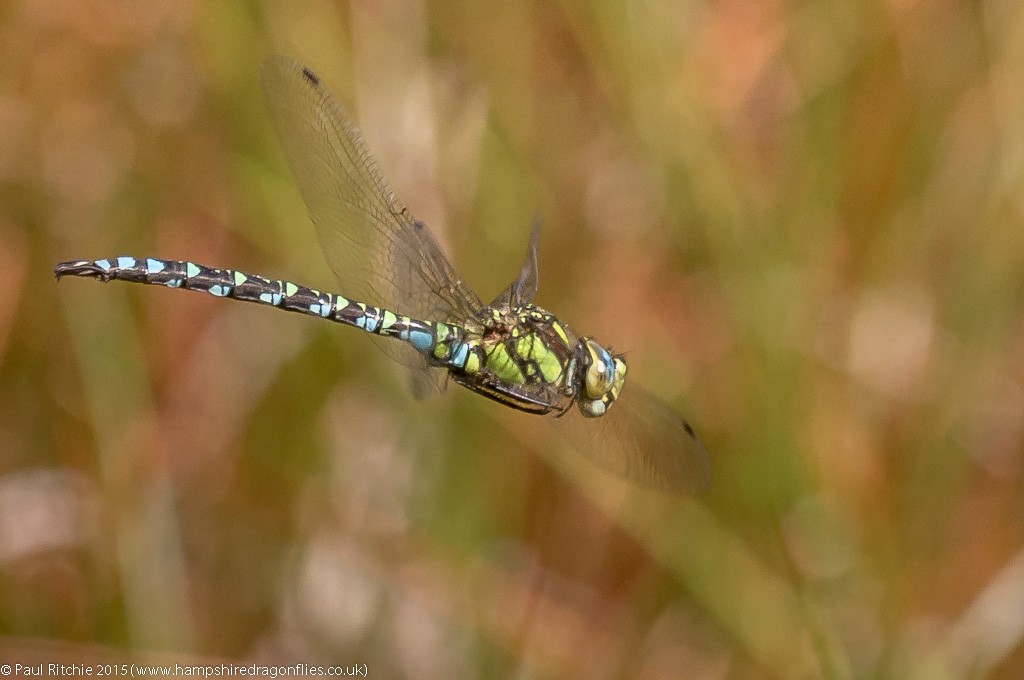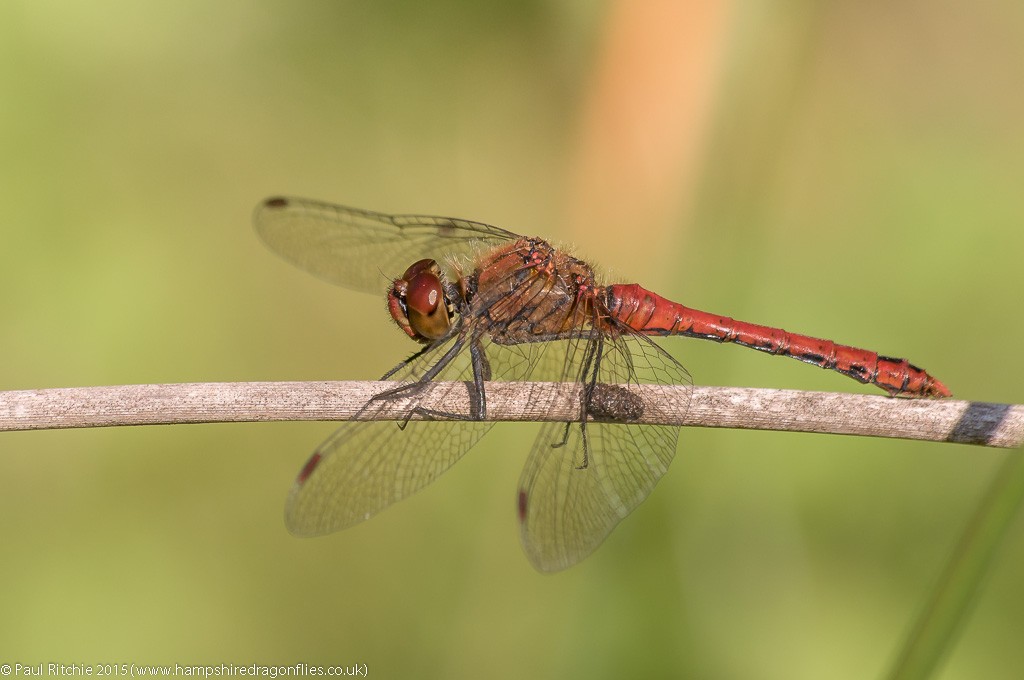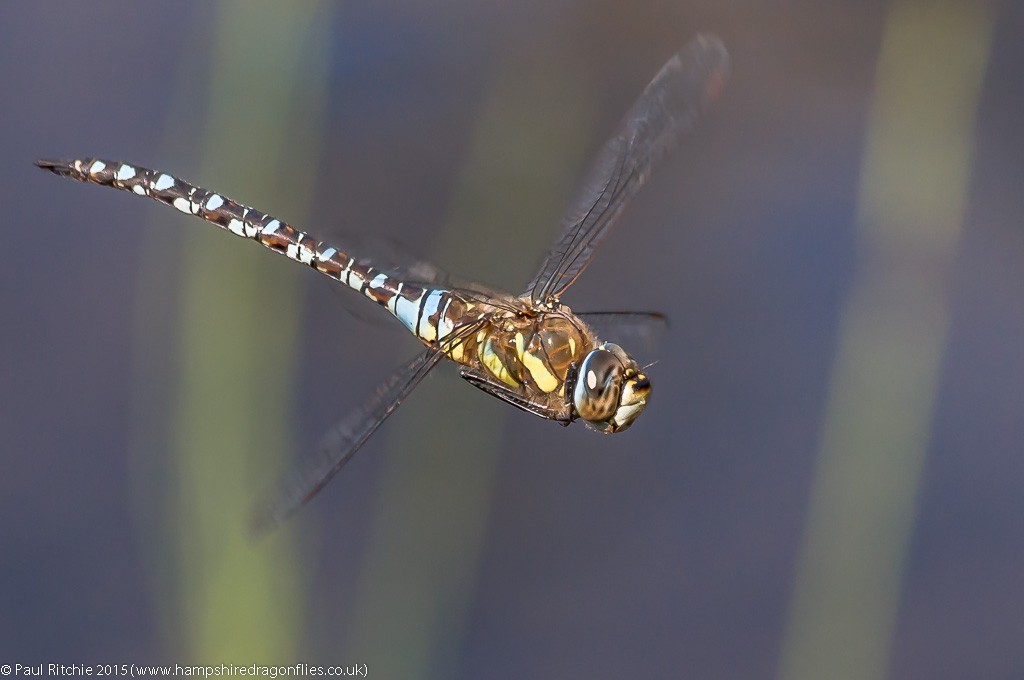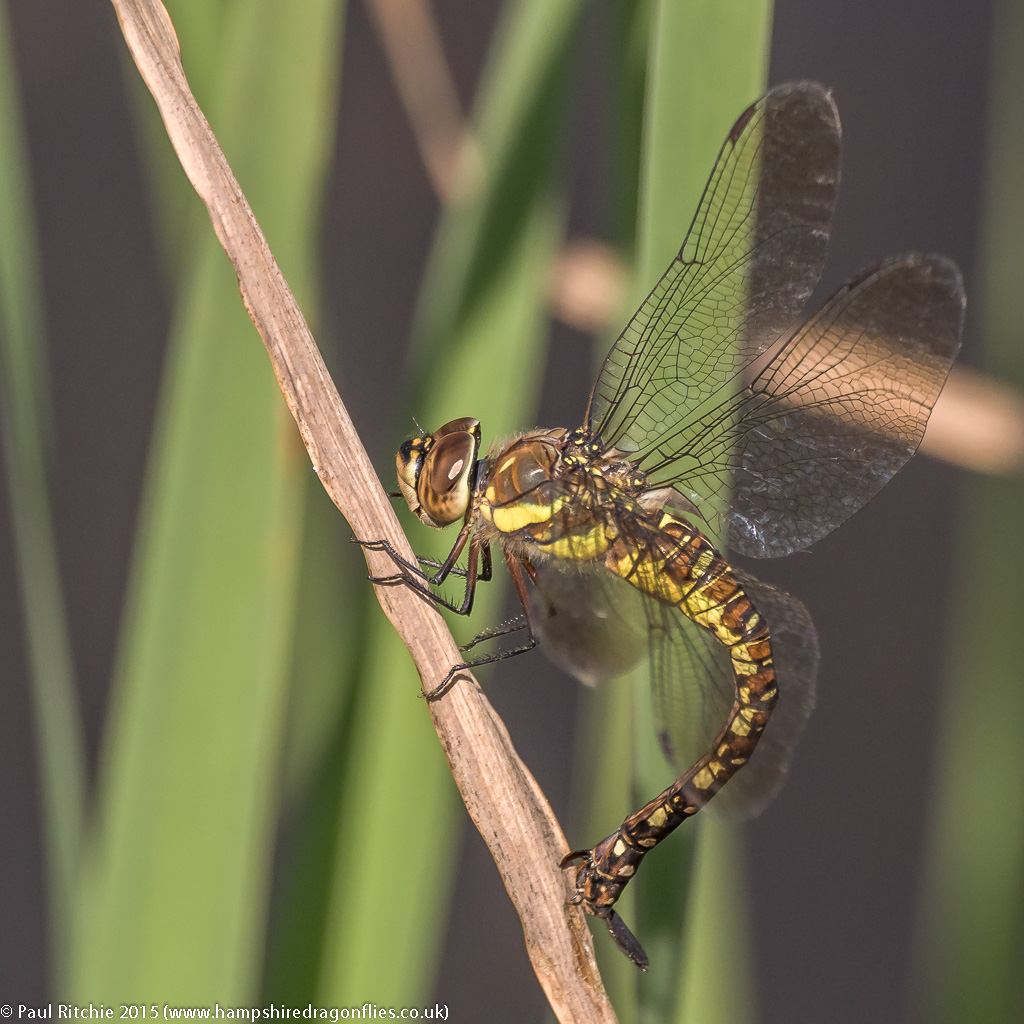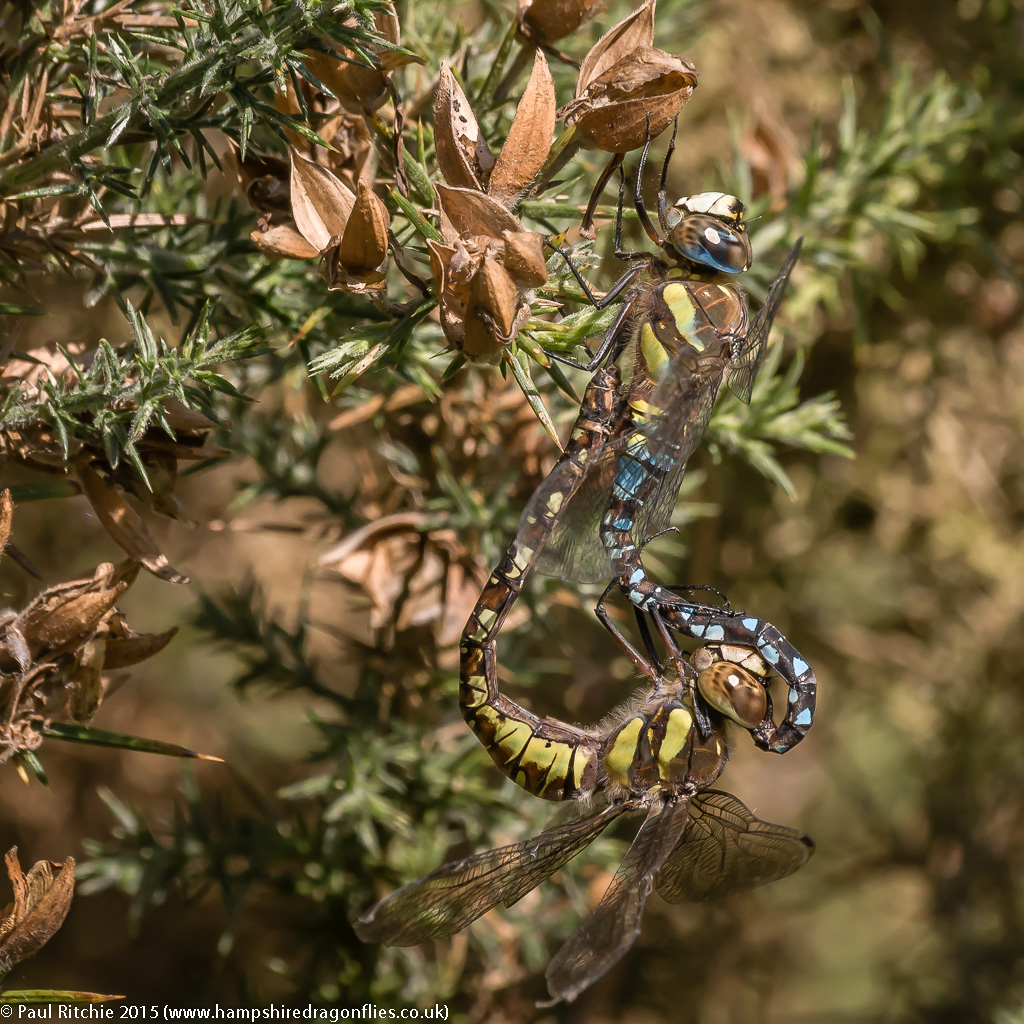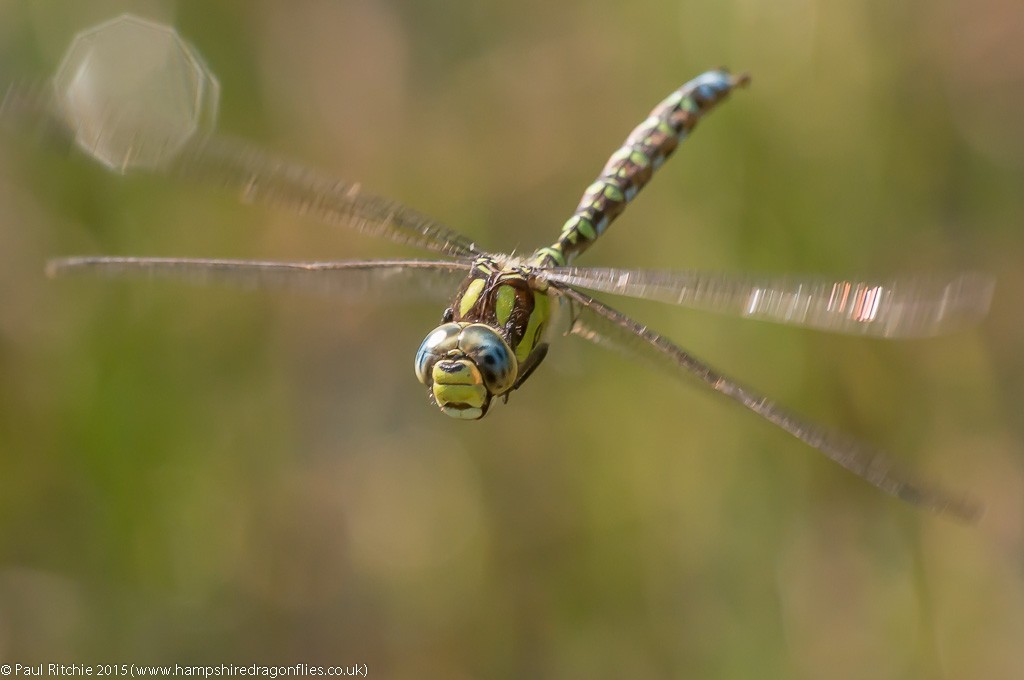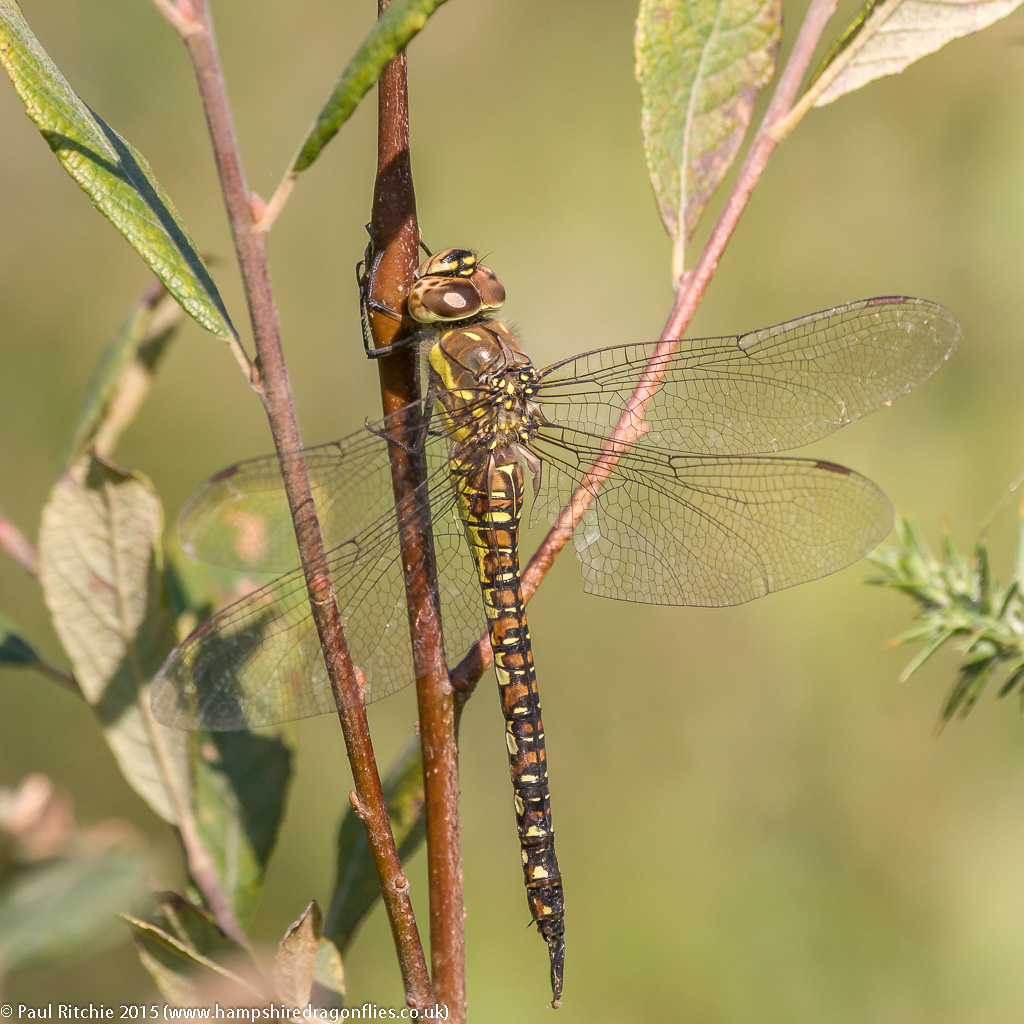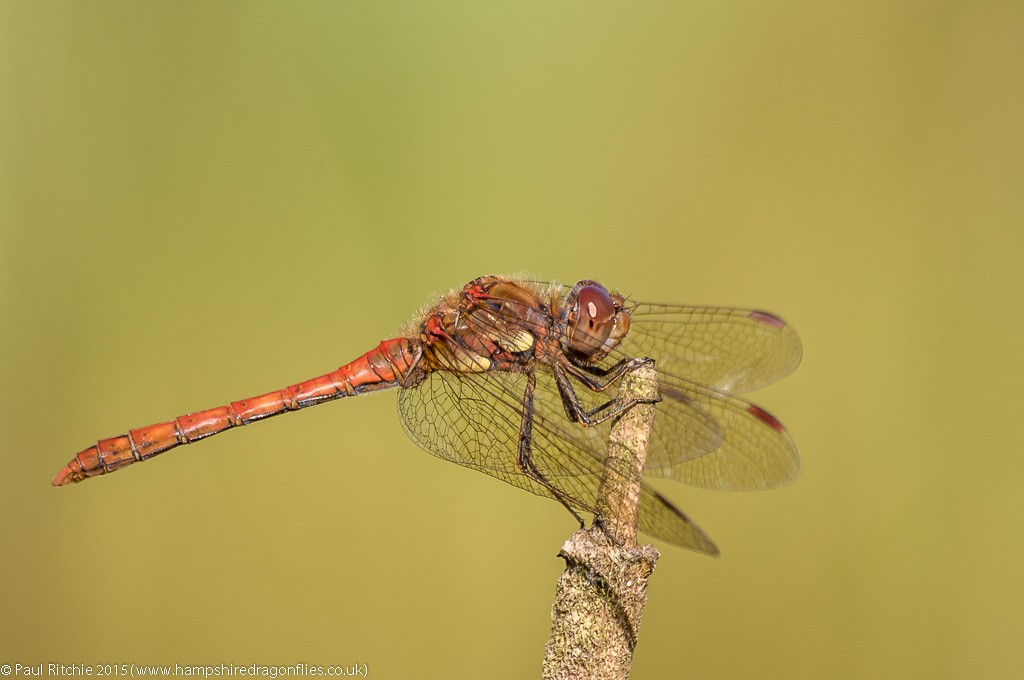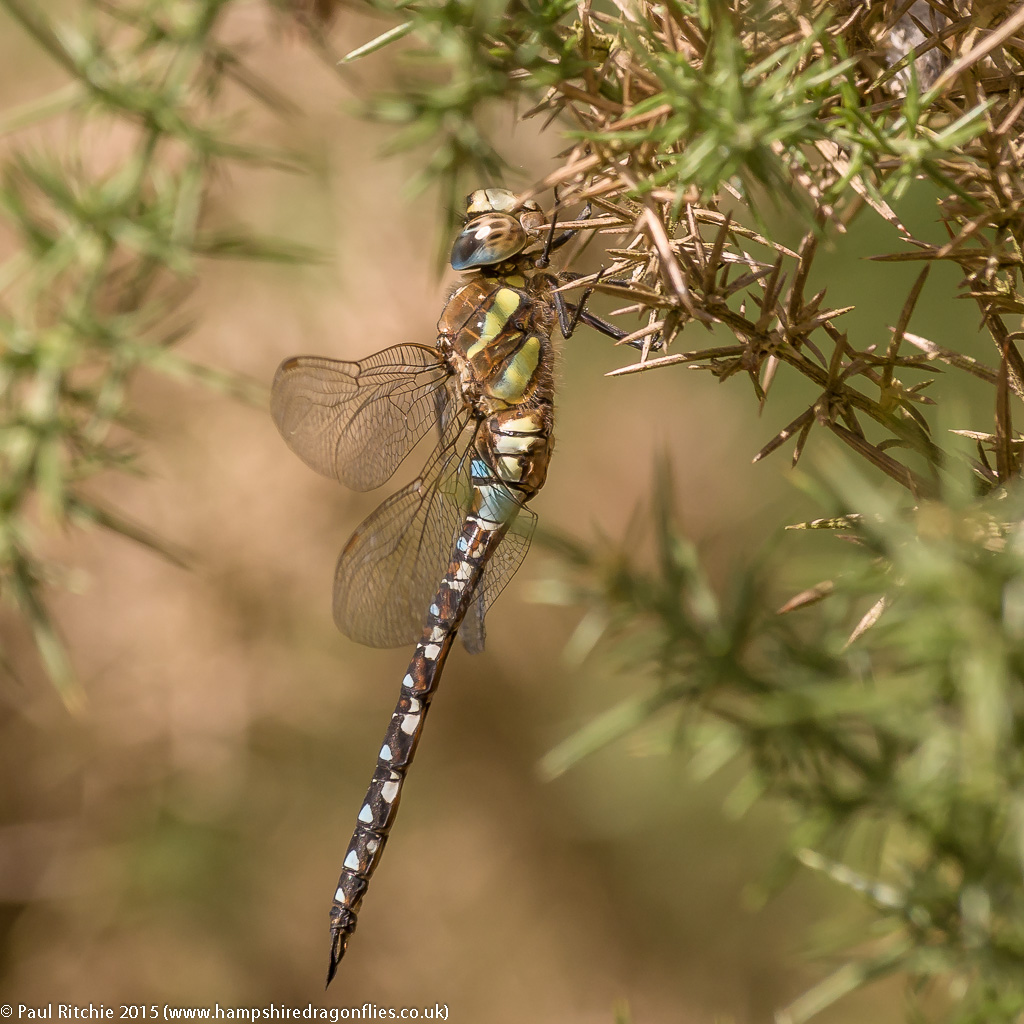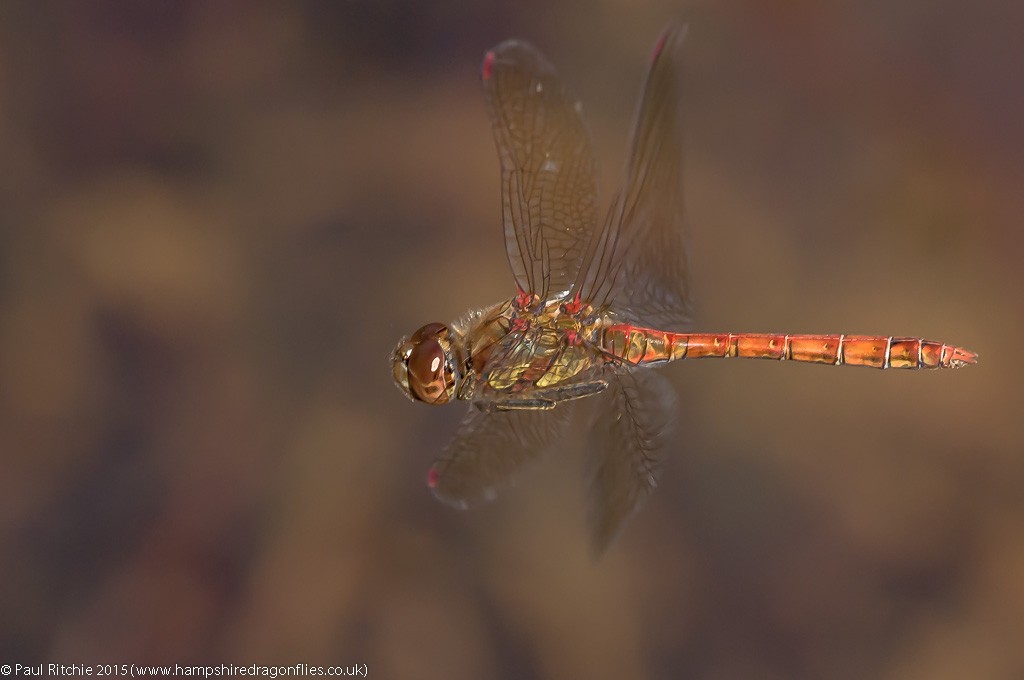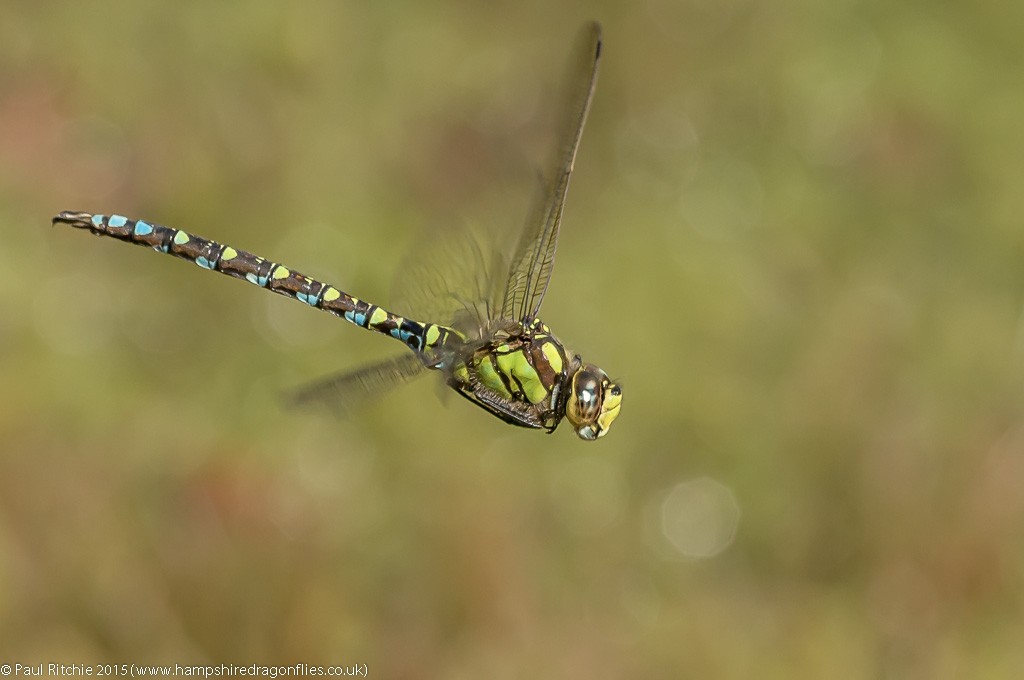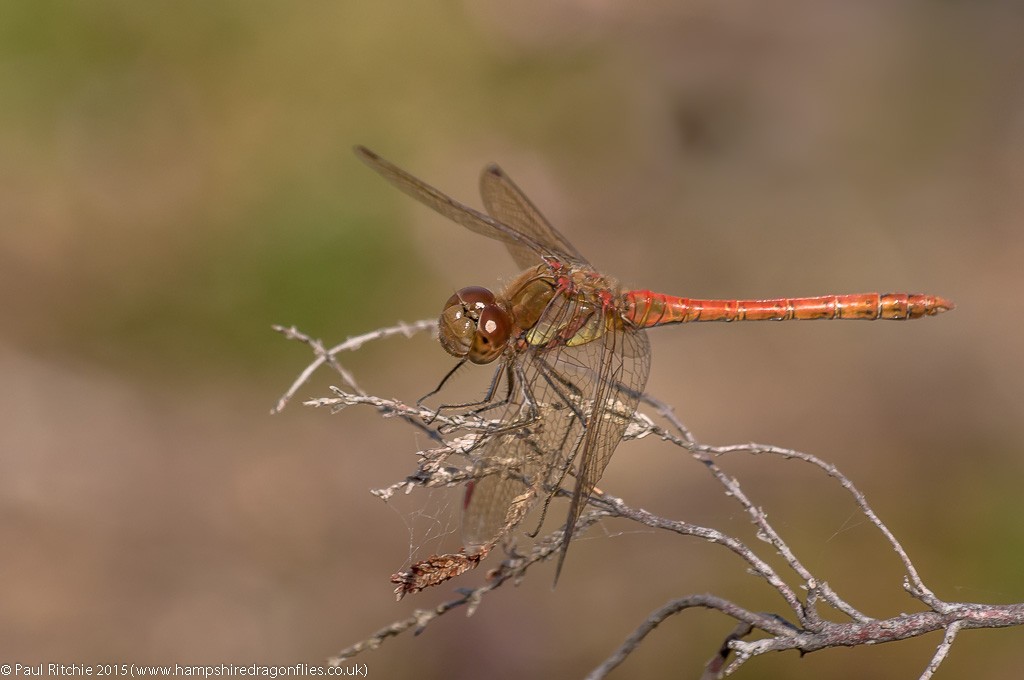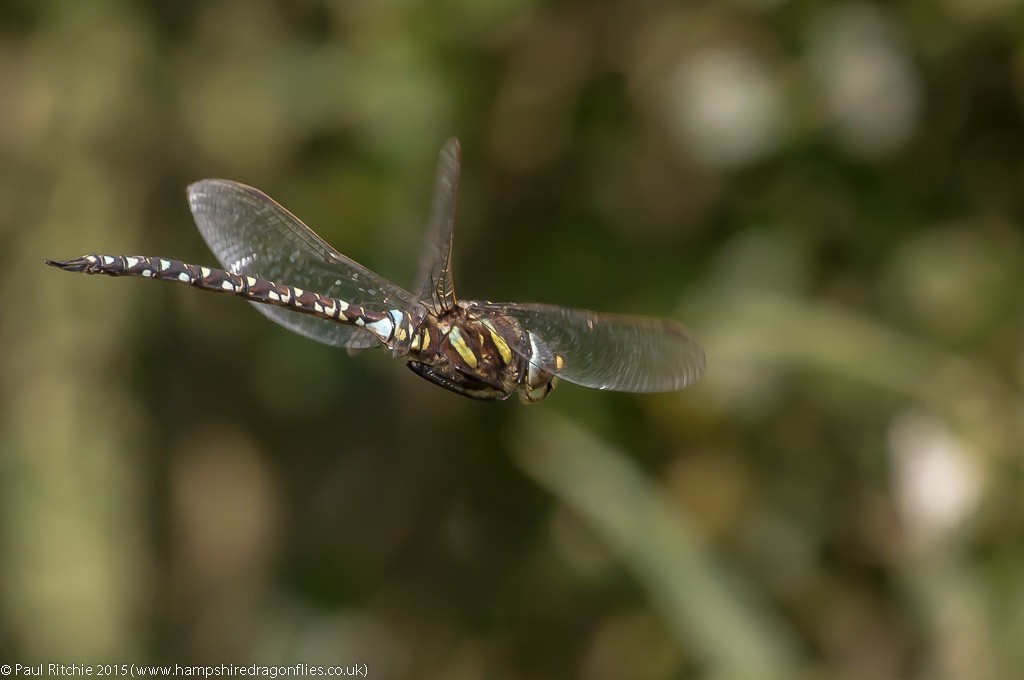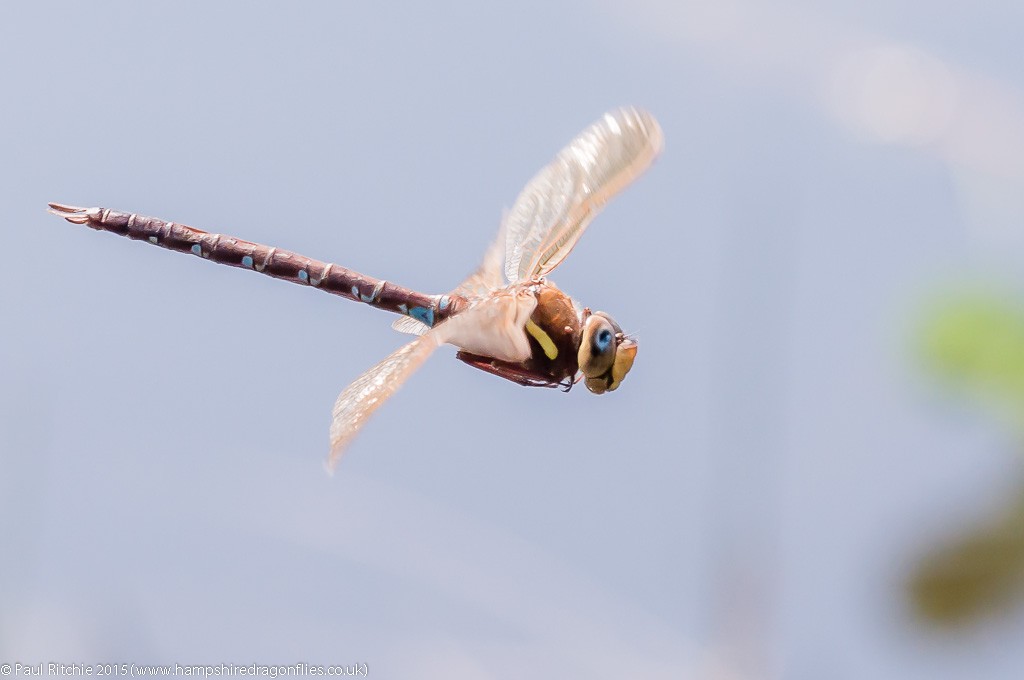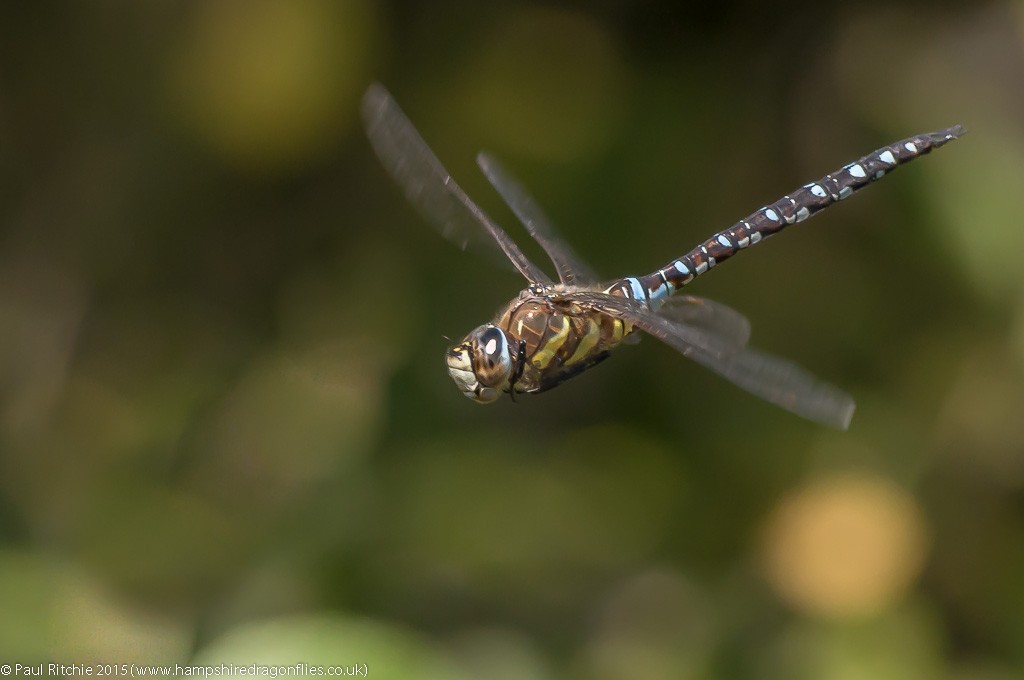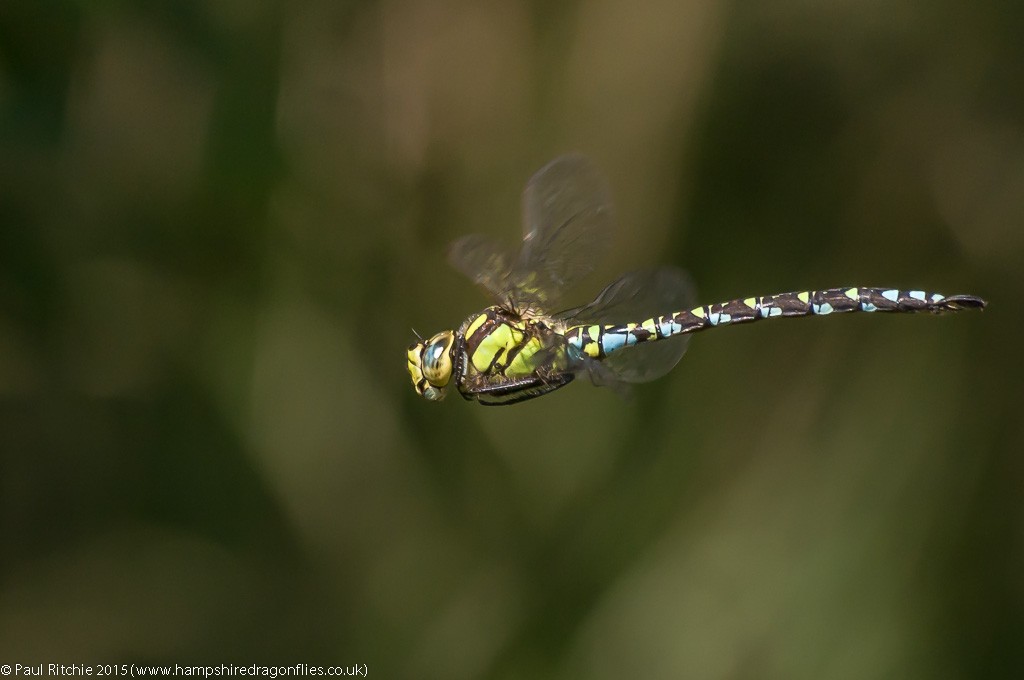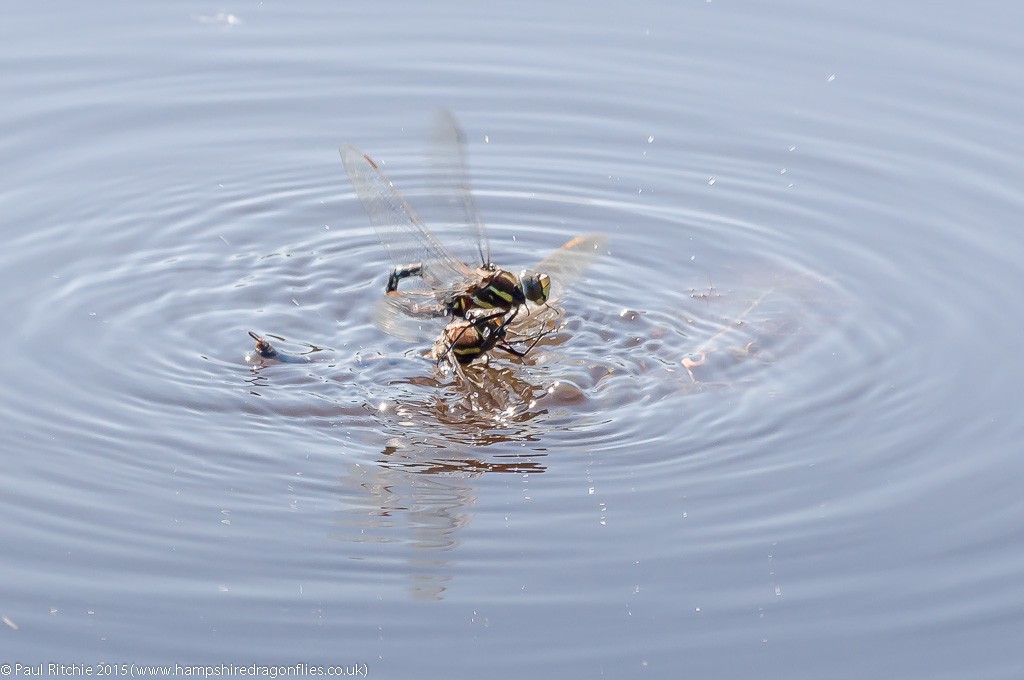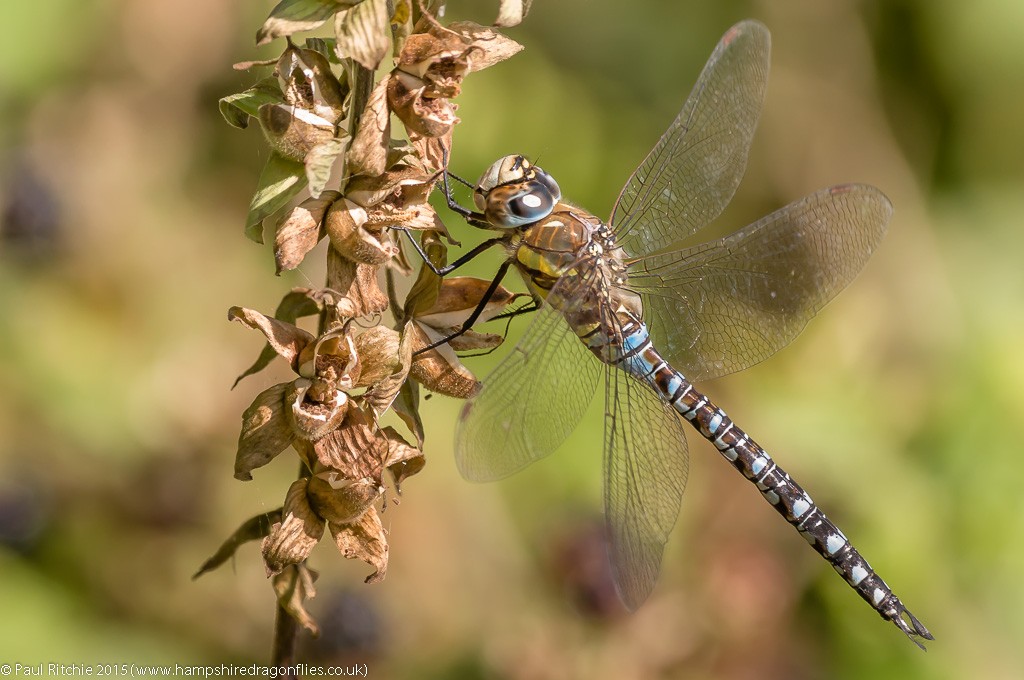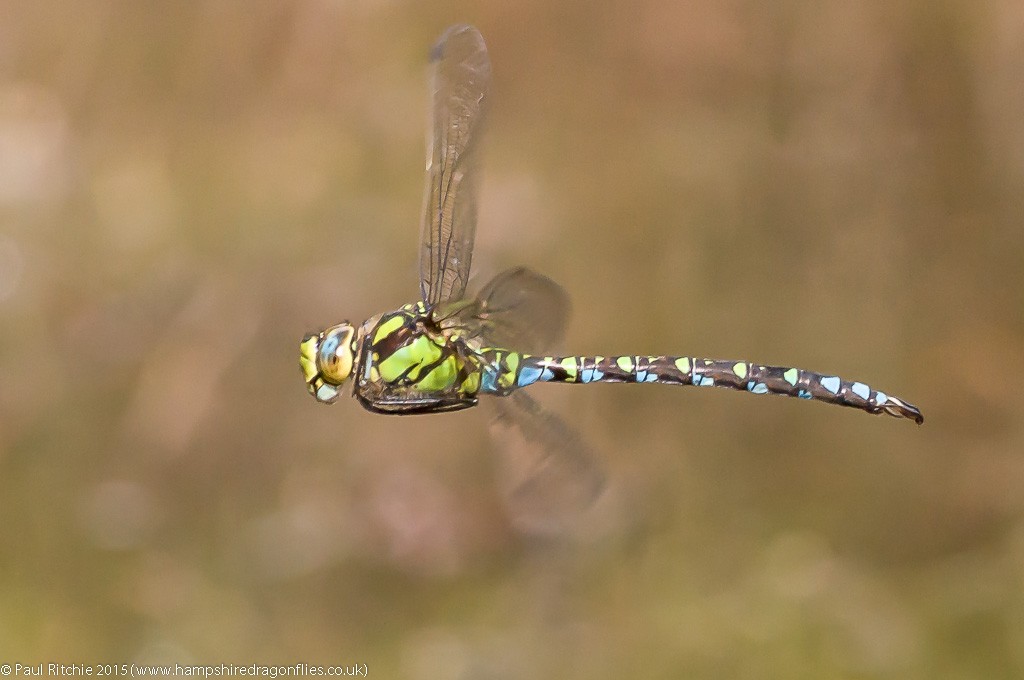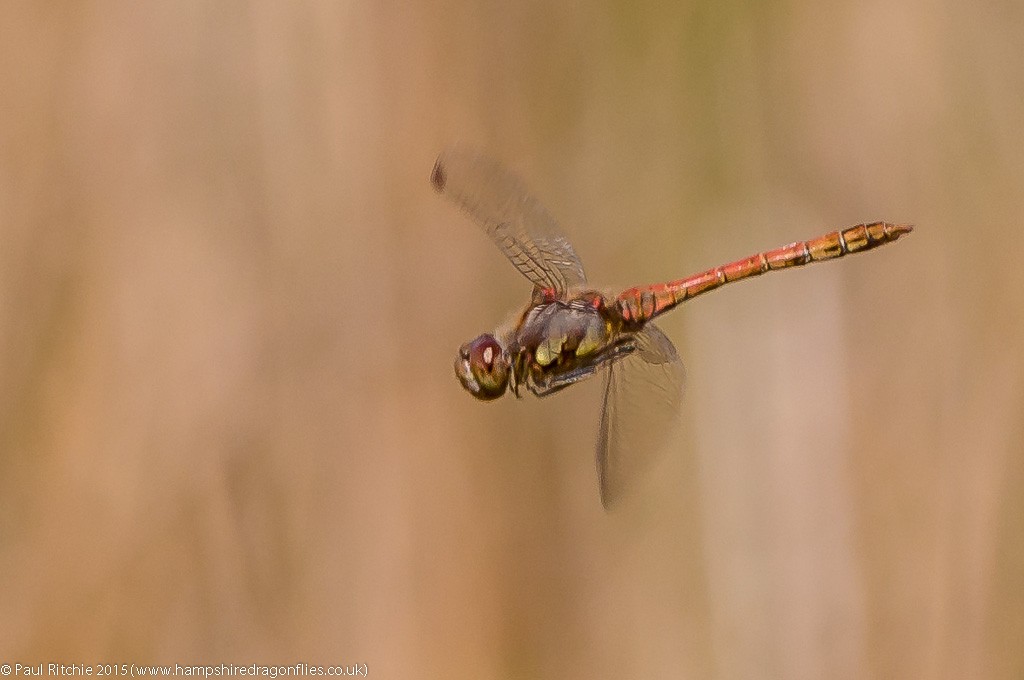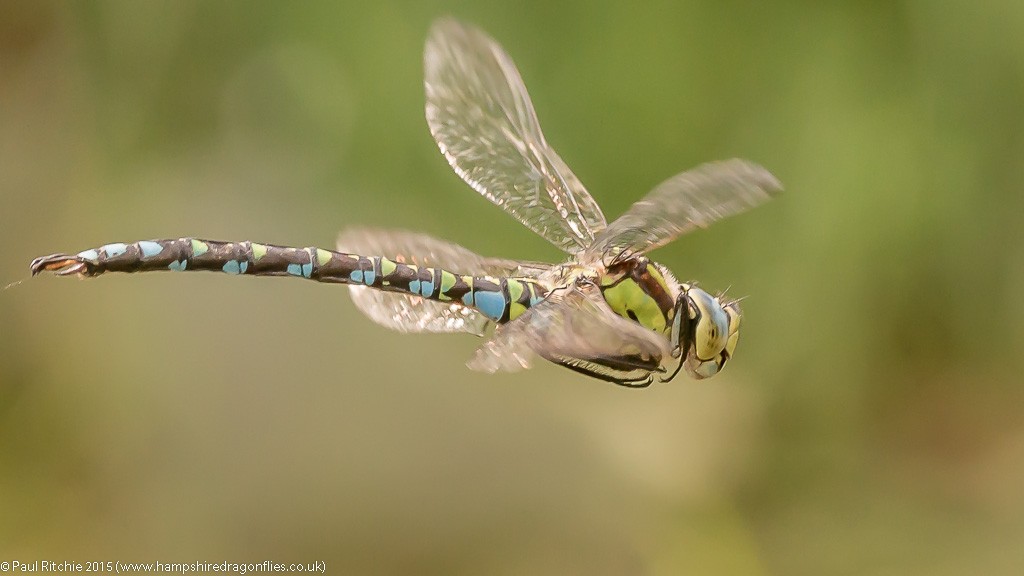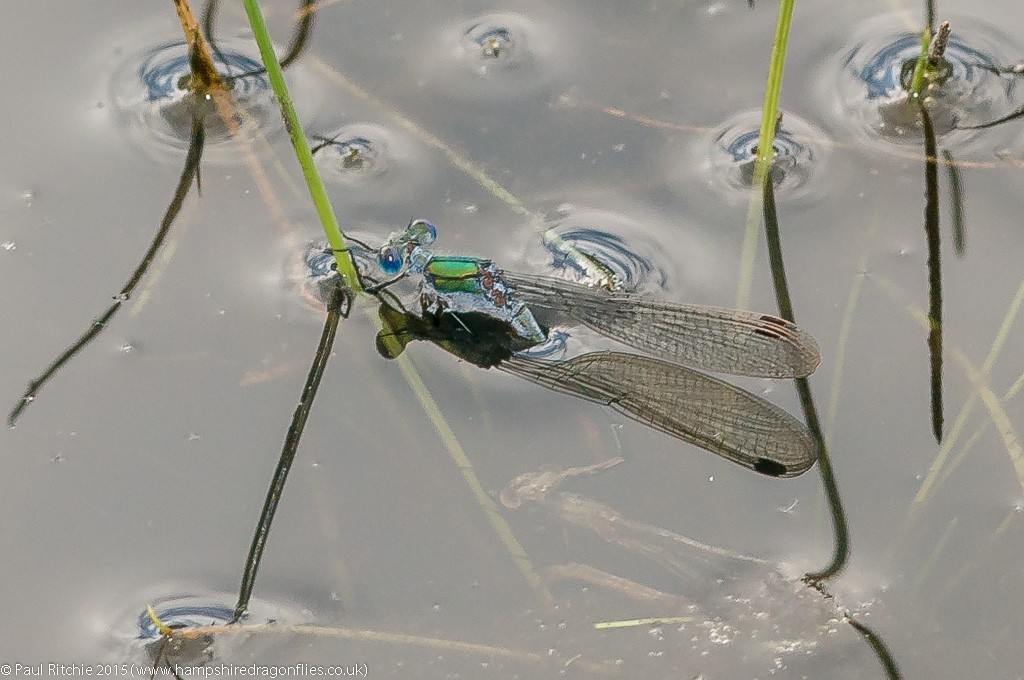Sunday 27th September
I missed the chance to go anywhere Saturday through pure indulgence the night before; entirely self-inflicted. Not that I was too bothered as we have a good week ahead of us and I don’t want to over-indulge and get bored with the same old species.
Sunday then for a trip to Bentley Wood with Sue to get a feel for the place late season. The drive over was rather pleasant with the gently undulating hills of North-West Hampshire leading into the picture-postcard charm of South Wiltshire.
The changing colours and harvested fields brought home the realisation that these halcyon days are diminishing for another year with tall fronds of yellowing Fern lining the woodland rides. A few wary Common Darters rose with our passing, out-numbered by the fine population of Speckled Wood butterflies. How very apt a name?
When we finally reached the pond we had a male Brown Hawker patrolling intermittently. Always a challenge to get in flight, but I made an effort anyway.
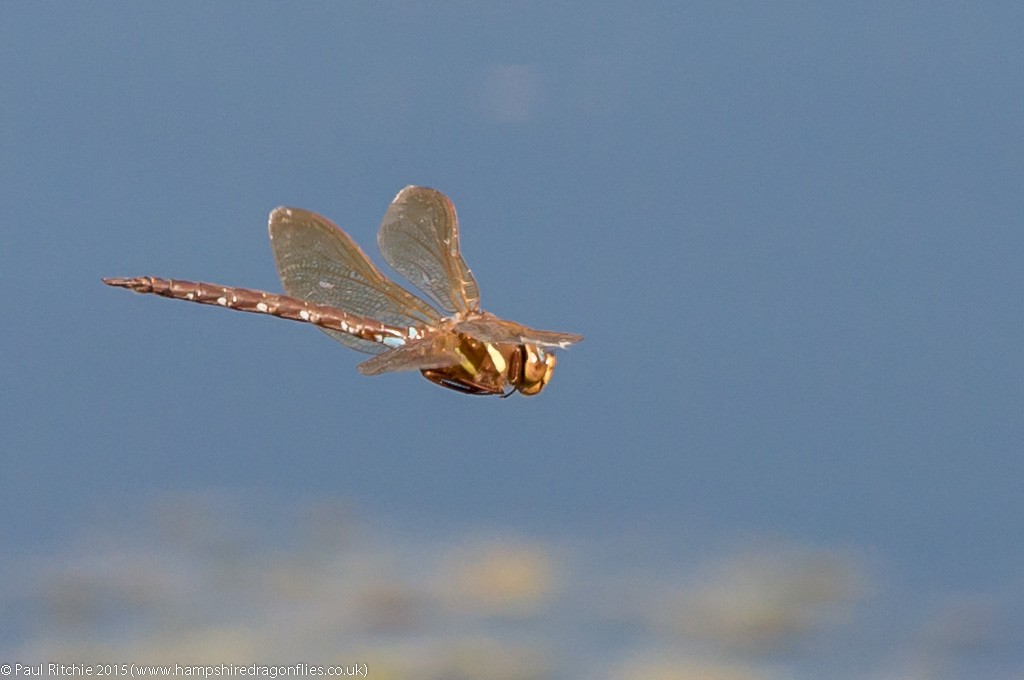
When I first found this pond in Spring I knew this was a perfect place for Migrant Hawkers. The extensive stands of Bulrush and the presence of Ruddy Darter were a dead give-away. Both were present today, with Migrant winning the count.
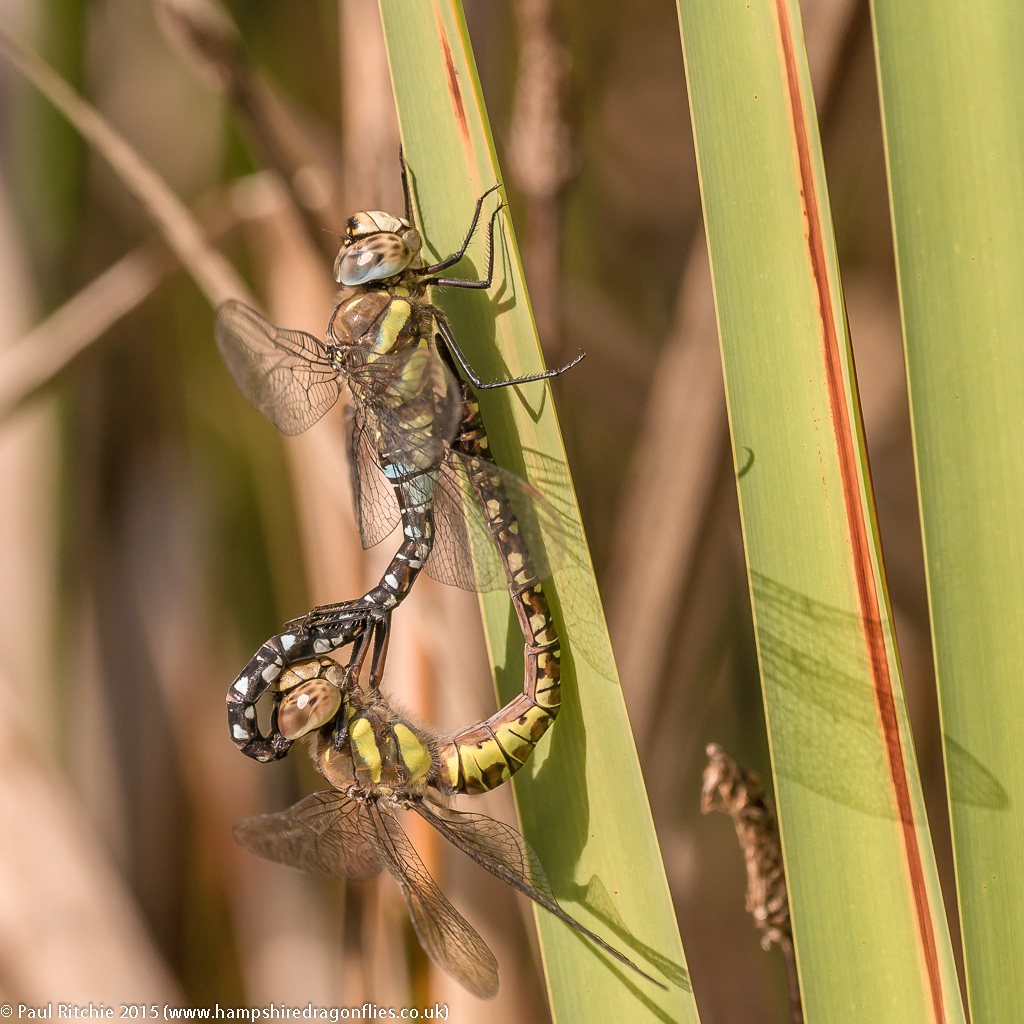
The Ruddy however were scarcer this time around, and even the Common Darters weren’t present in large numbers. A few Common Emeralds were present but no sign of any other damsels.
It was to be a day for the female Southern; at least three present along with three noticeably different males – a good recipe for some pairings. Sure enough, the two pairings we witnessed rose high towards the trees and perched about 20 feet up!
I’m beginning to wonder whether that pair I chanced upon 5 years ago was sheer luck!
Shortly afterwards my attention was grabbed by another male Brown Hawker. After a brief battle between the males, one of them landed at my feet to carry on feeding on his prey of a Red-legged Shield Bug.
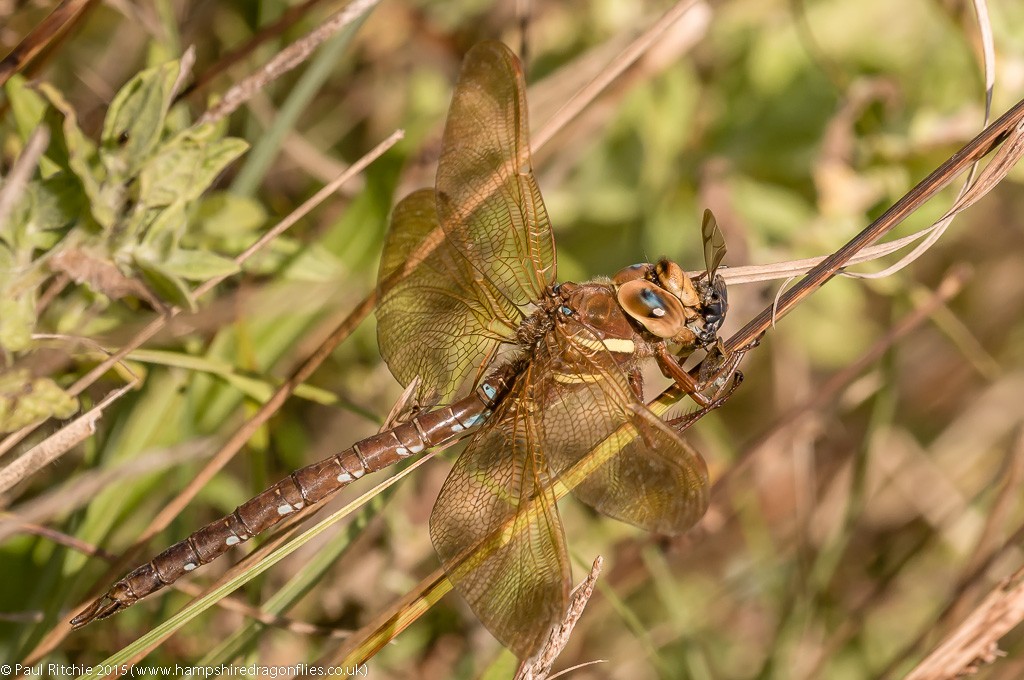
One of the male Southerns was sneaking in & out of the under-shore where the female had been, making for some tricky in-flighters. Occasionally he would rise to check me out.
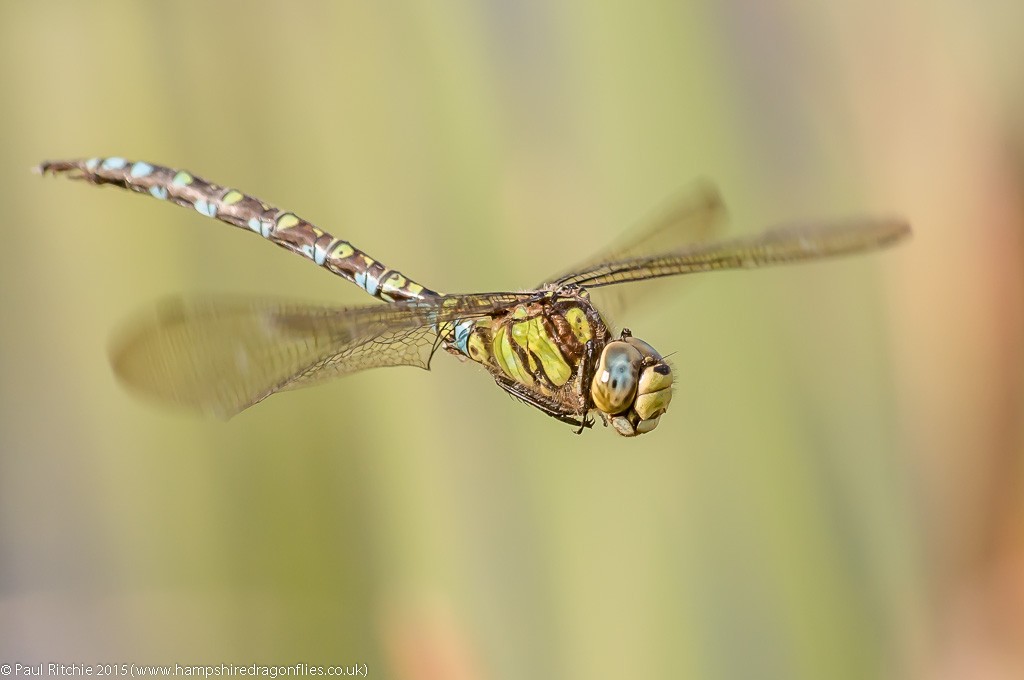
A frantic rustling in the grass alerted me to a female Southern Hawker held fast by her wings in a cobweb. I gently removed her and placed her among the scrub to allow Sue to use her fingernails to clear the web away from her wings.
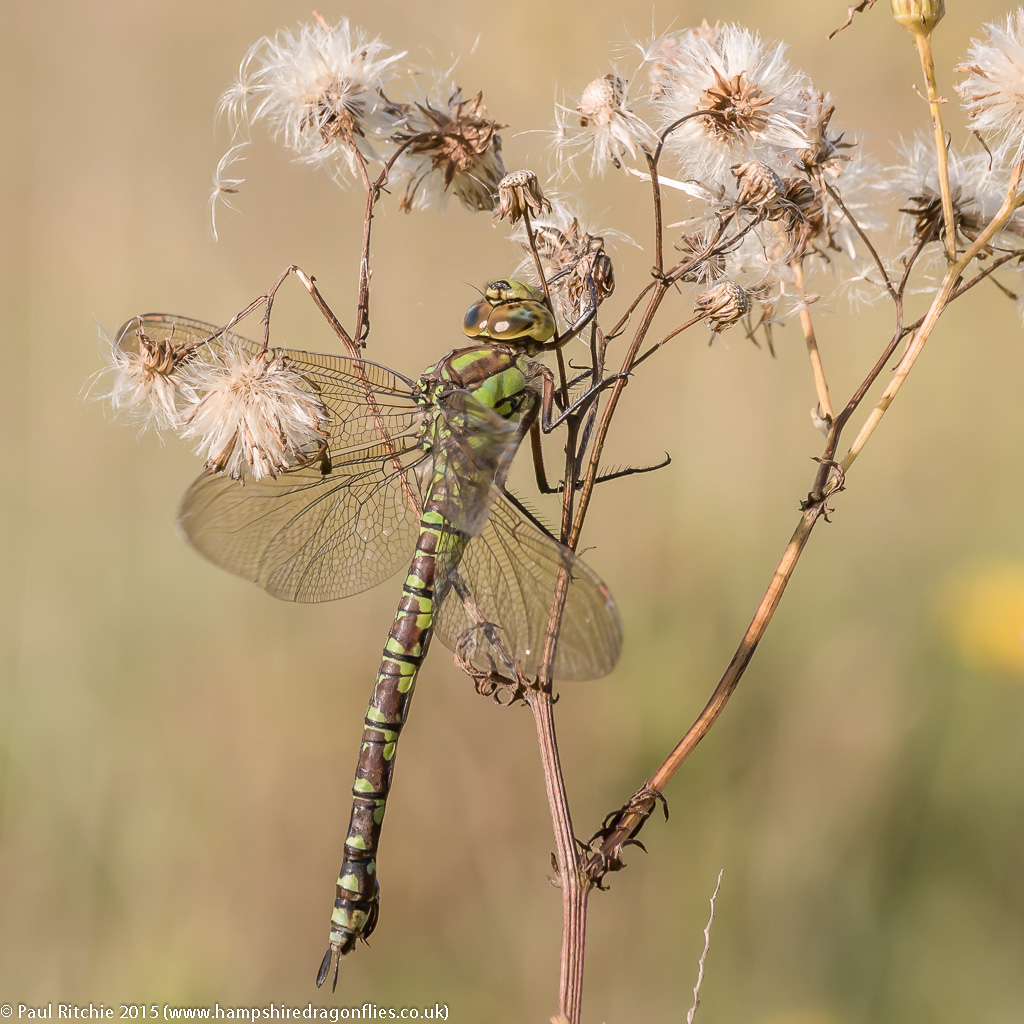
Now there are a few out there who frown upon intervening in nature, but I consider myself part of nature and if I can help a dragonfly, I will. This female doesn’t have long to live and needs to produce a new generation before her time is up. Becoming lunch while she’s ovipositing is unfair and unnecessary in my opinion.
So a good day then. Six species and plenty to keep us occupied.


